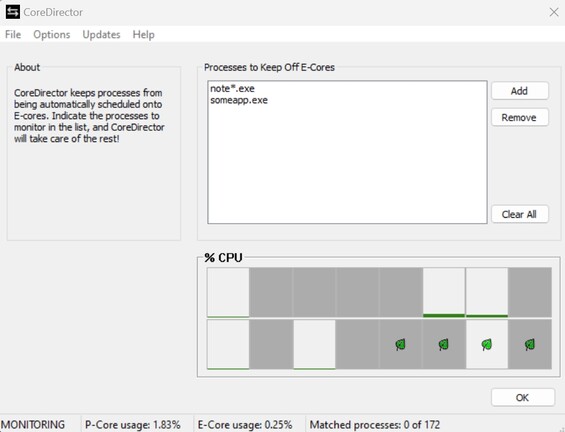Using CoreDirector, you can easily avoid electronic cores if they have a negative impact on performance.
In the case of the twelfth, thirteenth and fourteenth generation processors, Intel relies on the so-called hybrid design, which means that the number of integrated cores can be high, but their performance is different. In addition to P-core, users also get E-core, which often has a positive effect, but sometimes, usually in games, the process can cause unpleasant surprises. Although the giant company from Santa Clara has implemented a number of software developments with the help of Microsoft, which helps to avoid situations where the electronic core may be defective, there is not always an optimal option for this, and sometimes the solution is if the user disables the electronic cores. Manually.
The first idea works, but it is complicated, because it has to be programmed into the BIOS, and in practice it has to be turned on and off depending on the application. The most convenient is CoreDirector, which is not an application developed by Intel, but it can be amazingly useful for owners of the mentioned processors, because depending on the software, it is possible to control how the system works.
CoreDirector offers three basic operating modes. CPU Affinities allow all application-specific processes to be assigned to P-cores, unless that process intentionally targets the core. On the other hand, turning off efficiency mode disables automatic kernel scheduling, while CPU clusters are a kind of compromise, i.e. leave many decisions to the operating system. It is not known in advance which software is optimal for which program, so it is useful to try all three methods and then decide.
In developing CoreDirector, creating an easy-to-use application was a crucial aspect, thus ensuring freedom of decision even for less experienced users. The program itself It can be downloaded from the official websiteor the From Microsoft Store.
By the way, Intel does not recommend such applications, but does not prohibit their use, and there is no need to be afraid of losing the warranty, because it is essentially a software tuning, and it is not considered a tuning, and there is no particular risk of using such methods.













































